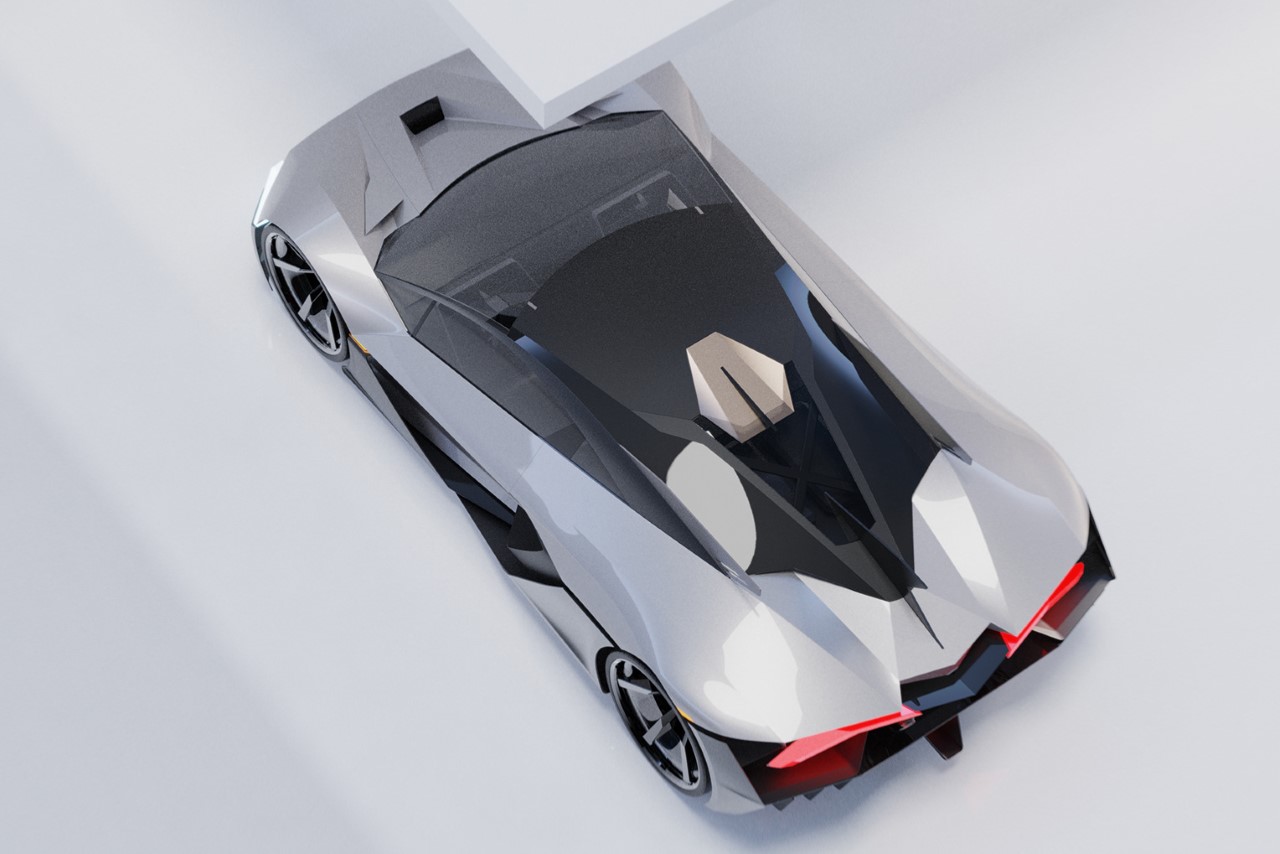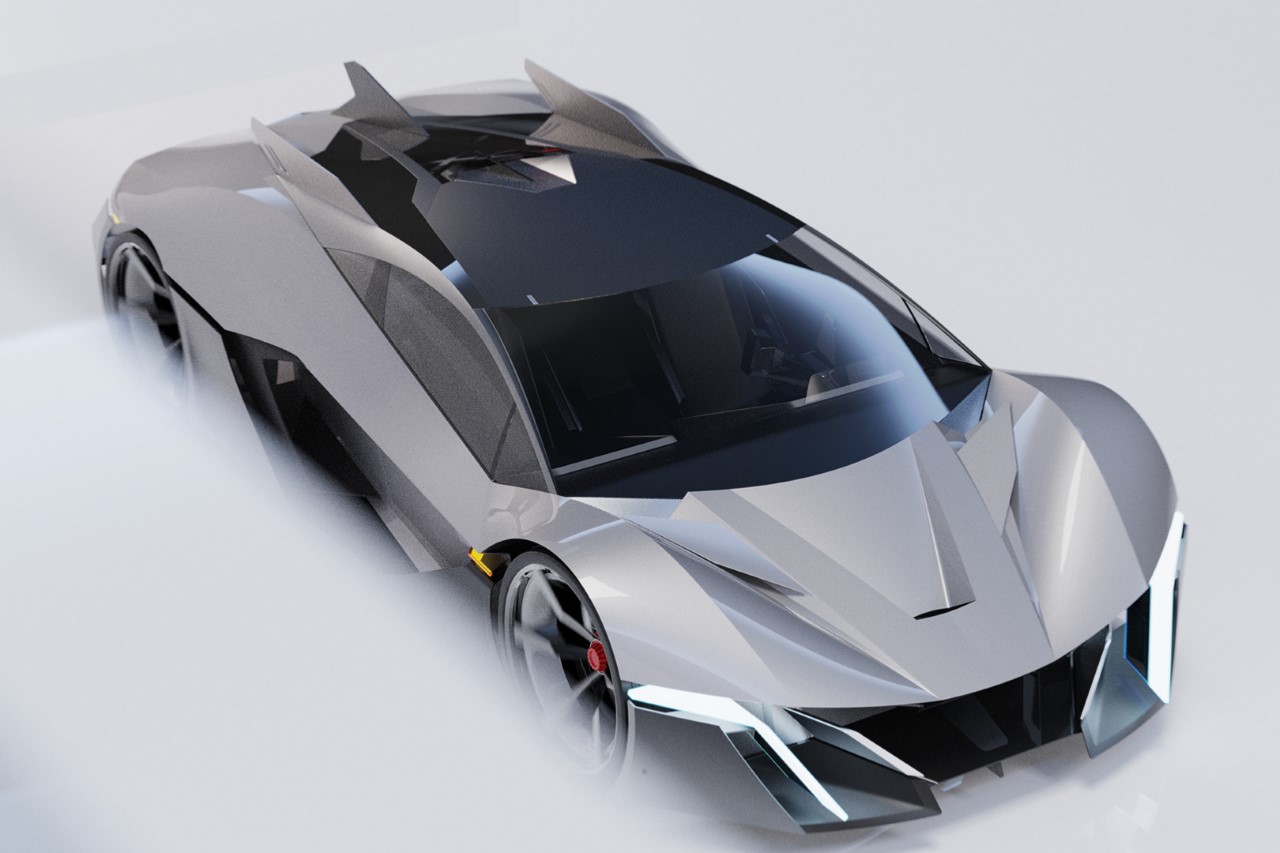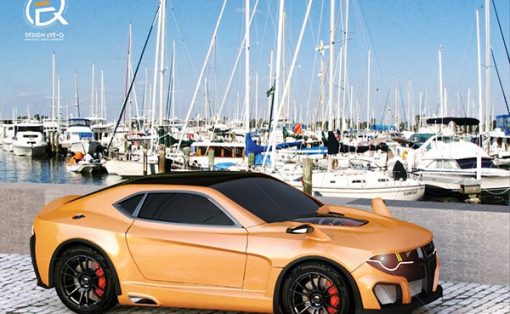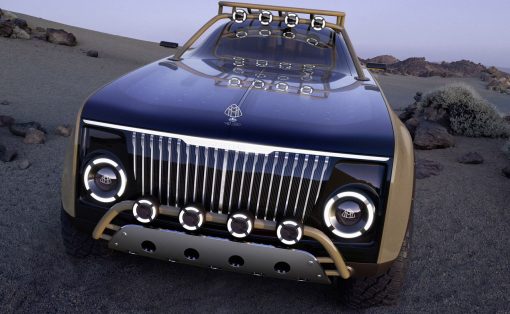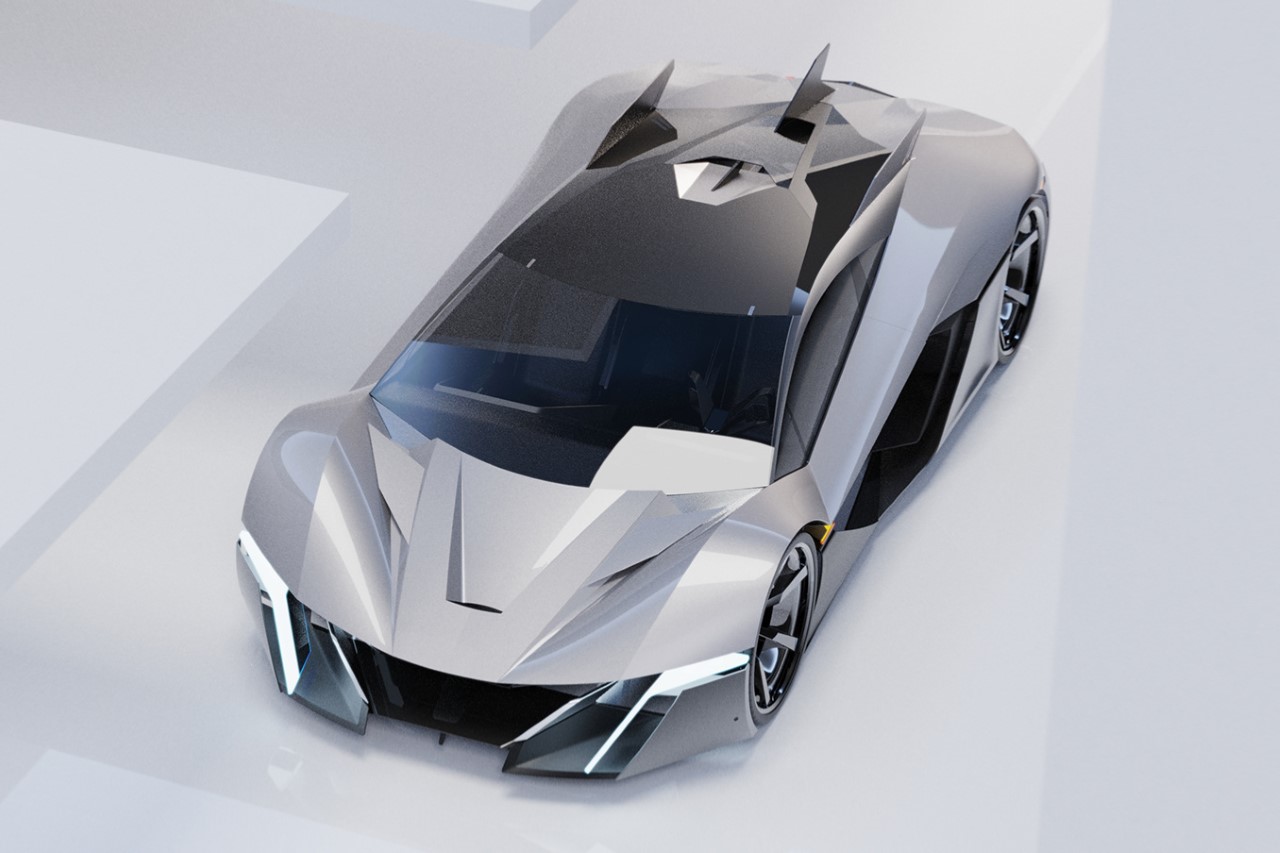
As a community of people who literally help build new technologies for the world, designers aren’t new to VR-based tools. AR/VR headsets have been available for the better part of a decade now, and designers have formed perhaps one of the largest demographics to use these devices for sketching, modeling, rendering, and reviewing designs. With the announcement of the Vision Pro headset, Apple’s making a pivot to ‘spatial computing’, and it only seems like VR/AR/MR tools will get a lot more democratized in the future, not just on the design end, but also the visual-aid end, allowing consumers/customers to see products before buying them. In this case, you wouldn’t have to travel to see a car like this Lamborghini Vision Event Horizon, you could just pop on a headset and enjoy the car’s visual aesthetic virtually… or spatially, as Apple would probably say.
Designed by Taiwan-based Lewis Lin, the Lamborghini Vision Event Horizon is a next-gen hybrid supercar that’s championed by VRAD, or Virtual Reality Assisted Design – a natural progression from years of CAD or Computer Assisted Design. Lin altered his existing workflow, using tools like Procreate for sketching, Gravity Sketch for modeling, and then KeyShot for rendering. Using a VR sketching/modeling program like Gravity Sketch helped Lin actually experience the car’s overall design as he built it. Proportions and details made much more sense when viewed in scale, and the car’s overall design stood out much more when observed beyond the boundaries of a flat, 16:9 desktop monitor or laptop screen.
Designer: Lewis Lin
Rendered on KeyShot: Click Here to Download Your Free Trial Now!
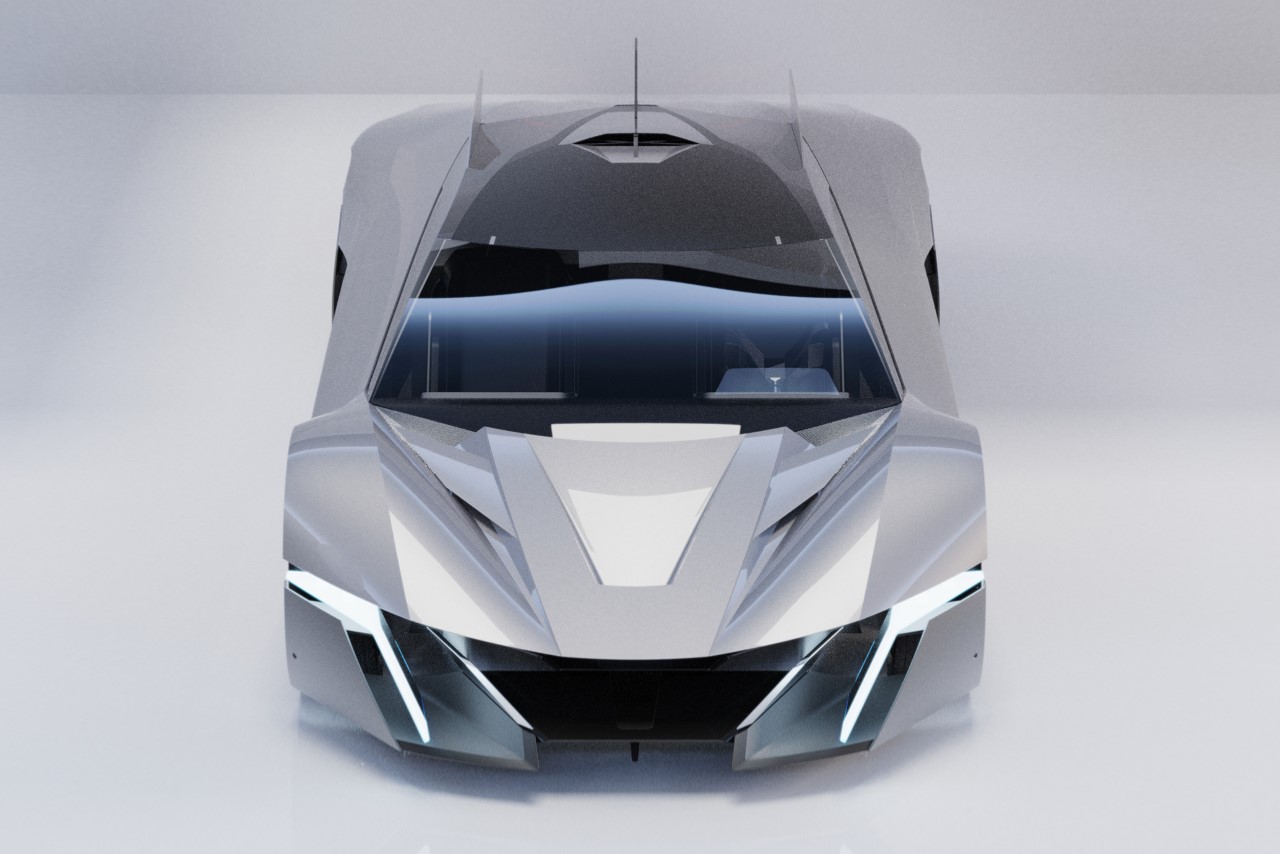
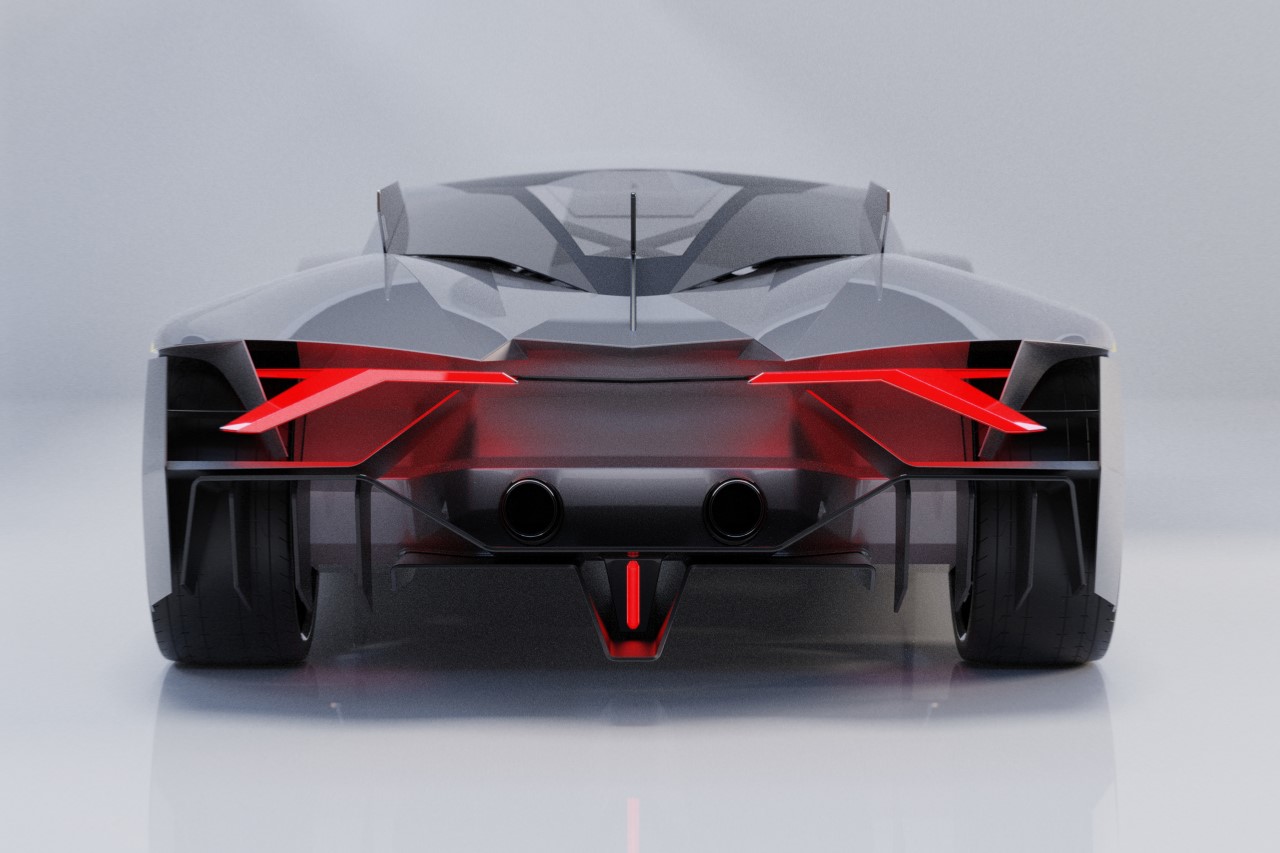
The Lamborghini Vision Event Horizon is a stunning car that amps up the Italian marque’s design language in an attempt to differentiate itself from the company’s older, ICE cars. A common trend with electric or even hybrid cars is to embrace a plain, metallic paint job, which the Vision Event Horizon does too – quite similar to Polestar cars or most Priuses seen on the roads. However, unlike the aforementioned, the Vision Event Horizon embraces the Lamborghini DNA too, with an edgy, aggressive exterior, angular paneling, and a signature wedge-shaped side profile.
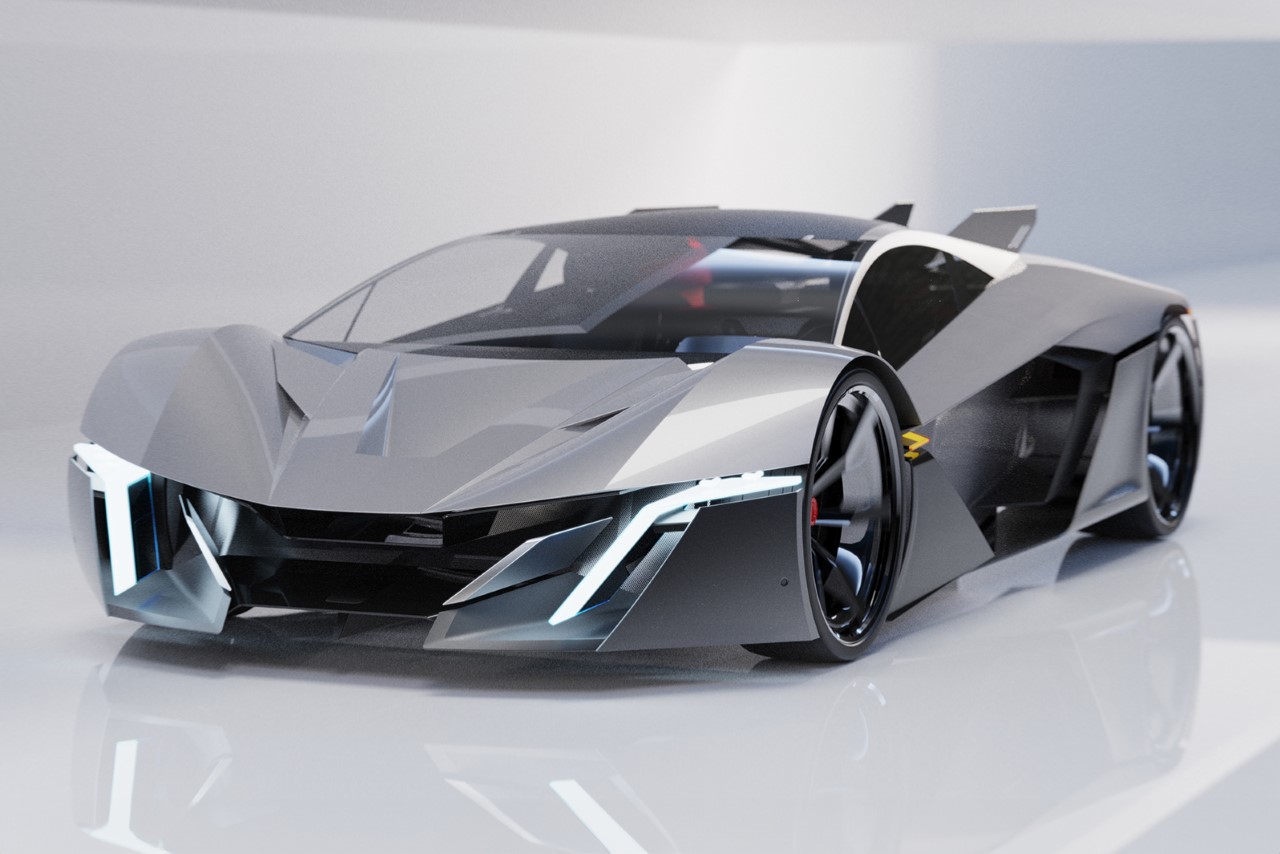
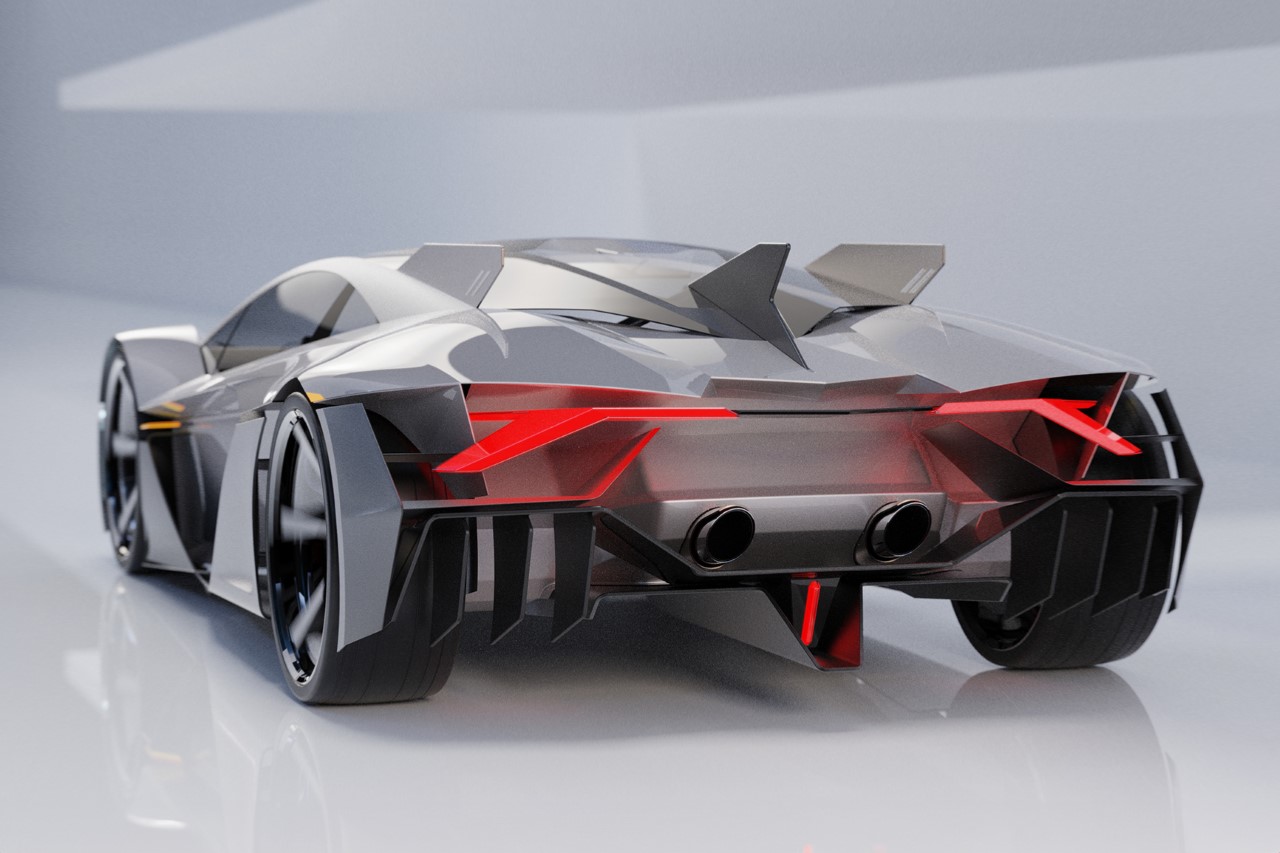
What stands out with this car is the headlight and taillight treatment, which feels slightly different from other Lamborghinis. The front of the car gives me Acura NSX GT3 Evo vibes, albeit with crowbar-shaped LED-strip headlights. The rear puts a neat spin on Lamborghini’s Y-shaped taillights with a more contemporary redesign. The two exhausts right below it scream power too, although given its hybrid drivetrain, there’s a sense of reassurance that the power is supplemented by clean energy too.

The Vision Event Horizon seats two in its comfortably spacious interiors. Lin only modeled the exteriors, so it’s difficult to say what the interiors look like, or what’s under the hood. If this thing’s a true modern Lamborghini, the engine will be located in the rear, right under the three fins that help with downforce and cornering, as well as working as antennas to help amplify cellular/radio signal within the car.
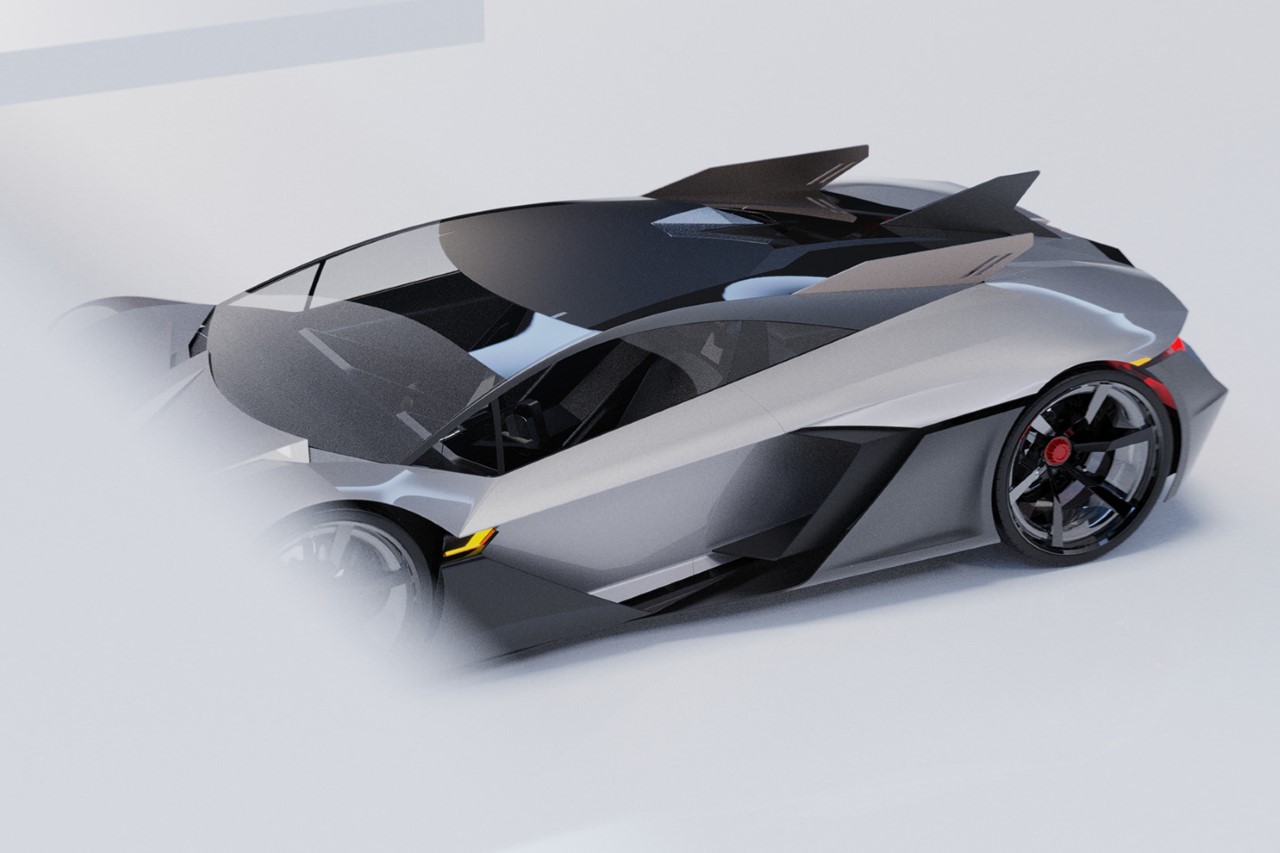
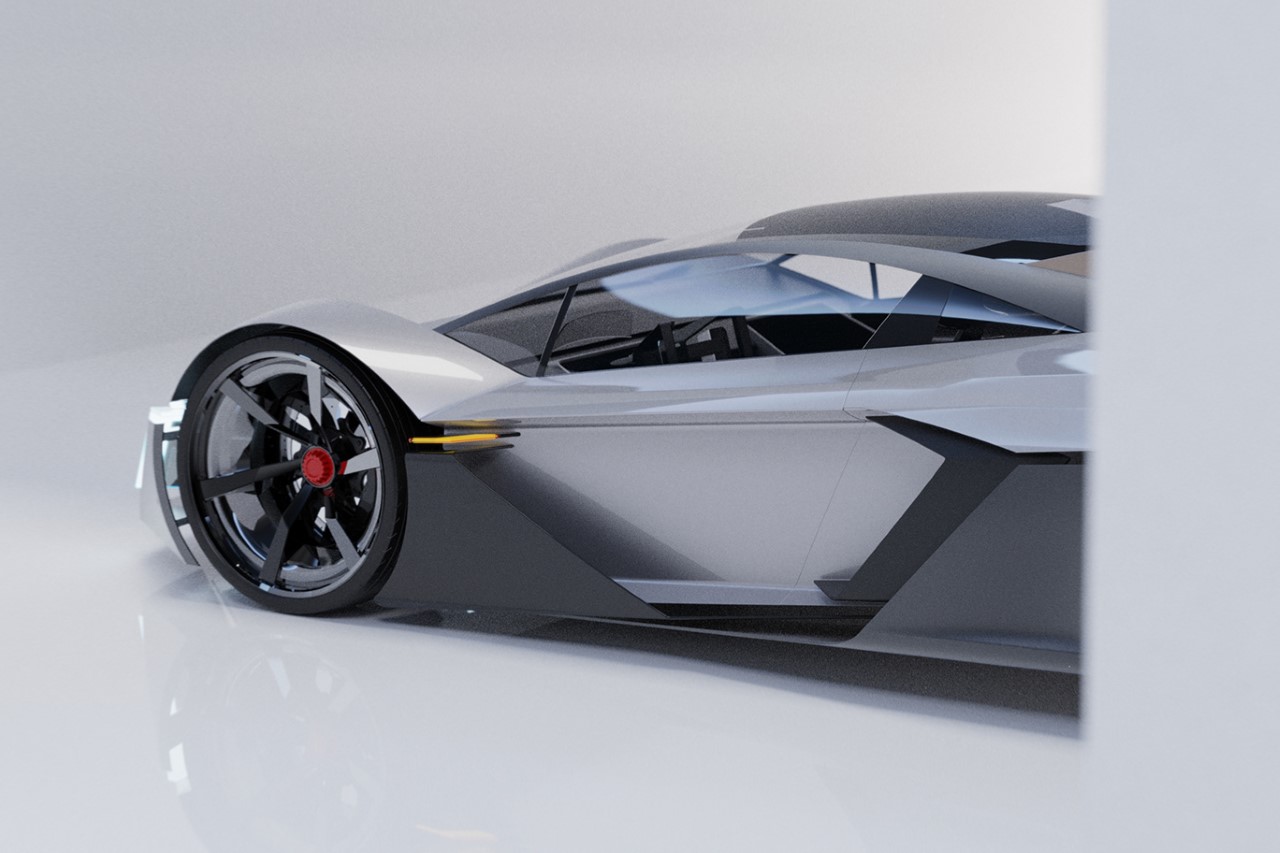
Lin explained his entire design process on his Behance page. “In this project, I used the GRAVITY SKETCH to enter Virtual Reality after sketching and used the sketch as a foundation to swiftly produce a realistic scale three-dimensional model in space. The sensory stimulation provided by the 3D space model is not accessible in 2D sketching. It allows me to extract more distinct thinking and ideas in the early stages of the design, giving me a more holistic picture,” he said.
“I draw a rough sketch in Procreate, and this is used as a basis to create the basic framework in the Gravity Sketch using the stroke function and laying out the uneven surfaces. After completing the exploratory model, I imported the model into Rhinoceros to meet the final model.”
